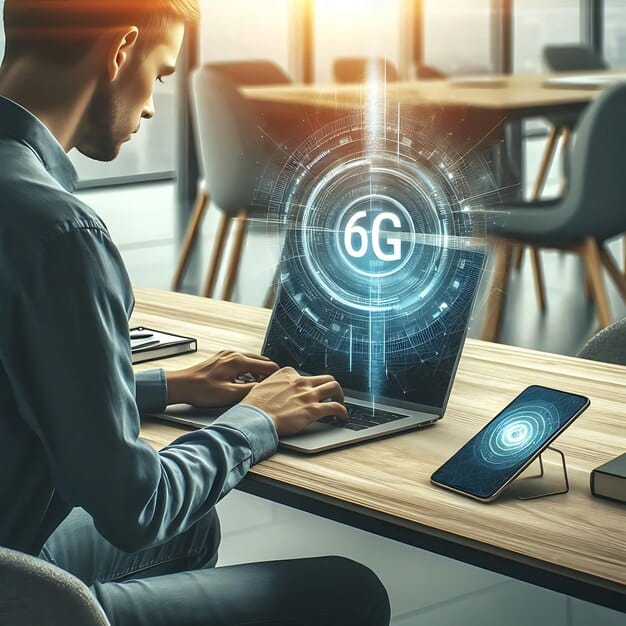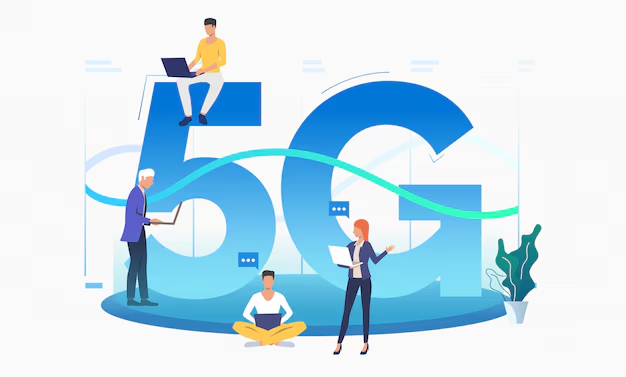The advent of 5G technology marks a transformative milestone in the telecommunications landscape, promising unparalleled advancements in speed, connectivity, and responsiveness.
As the fifth generation of wireless technology, 5G is designed to support a myriad of applications, from ultra-reliable low-latency communication for autonomous vehicles to massive machine-type communications for the Internet of Things (IoT). These capabilities present exciting opportunities but also introduce a range of complexities and challenges, particularly in the realm of test and measurement.
Test and measurement standards are critical for ensuring the reliability, performance, and safety of telecommunications systems. They provide the frameworks and guidelines needed to evaluate the functionality of devices, networks, and services.
However, the rapid evolution of technology brought about by 5G necessitates a reevaluation and adaptation of these standards. As we transition to this new era of connectivity, it is crucial to understand the implications of 5G on existing testing protocols and the importance of updating them to meet emerging requirements.
This blog explores the impact of 5G on test and measurement standards, highlighting the challenges it poses and the adaptations needed to ensure robust and reliable performance in this new technological landscape.
By examining the intersection of 5G and testing practices, we can better prepare for the future of telecommunications and the innovative applications it will enable.

Understanding 5G Technology
5G technology represents a significant leap forward in wireless communication, designed to meet the increasing demands for higher data rates, lower latency, and enhanced connectivity. This section delves into the key features and capabilities of 5G, its differences from previous generations, and its implications for various industries.
A. Overview of 5G: Key Features and Capabilities
- Increased Speed:
One of the most notable enhancements of 5G is its ability to deliver data rates up to 100 times faster than 4G. This leap in speed enables seamless streaming of high-definition content, faster downloads, and smoother online gaming experiences. - Reduced Latency:
5G technology promises ultra-low latency, potentially as low as 1 millisecond. This reduction is crucial for applications requiring real-time feedback, such as remote surgery, autonomous vehicles, and augmented reality (AR). - Massive Connectivity:
5G is designed to support a vastly greater number of connected devices—up to a million devices per square kilometer. This capability is essential for the proliferation of IoT devices and smart infrastructure, enabling cities to become smarter and more efficient. - Enhanced Reliability:
With its focus on ultra-reliable low-latency communication (URLLC), 5G ensures consistent and dependable connections, which are vital for mission-critical applications in industries such as healthcare and manufacturing. - Network Slicing:
This feature allows operators to create multiple virtual networks within a single physical 5G network. Each slice can be customized to meet the specific needs of different applications or user groups, optimizing resource allocation and performance.
B. Differences Between 4G and 5G Technologies
- Speed and Bandwidth:
While 4G technology offers maximum speeds of around 1 Gbps, 5G can achieve speeds exceeding 10 Gbps under optimal conditions. This increase in bandwidth facilitates more simultaneous connections and richer user experiences. - Latency:
4G networks typically experience latency of around 30-50 milliseconds, whereas 5G aims for latencies as low as 1 millisecond. This dramatic reduction enables real-time applications that were previously infeasible. - Architecture:
5G networks are built on a more flexible and scalable architecture, utilizing a combination of small cells, massive MIMO (Multiple Input Multiple Output), and beamforming technology. This approach enhances coverage and capacity, especially in densely populated urban areas. - Use Cases:
5G expands the potential applications far beyond those supported by 4G, enabling innovations such as smart cities, remote healthcare, autonomous vehicles, and immersive experiences through AR and virtual reality (VR).
C. Importance of 5G for Various Industries
- Healthcare:
5G facilitates telemedicine, remote monitoring, and even remote surgeries, where real-time data transmission is critical for patient care. - Transportation:
With ultra-reliable low-latency communication, 5G plays a pivotal role in the development of autonomous vehicles and connected transportation systems, improving safety and efficiency. - Manufacturing:
The adoption of 5G in manufacturing leads to smarter factories, where connected machines and IoT devices work together seamlessly to enhance production efficiency and reduce downtime. - Entertainment and Media:
The gaming industry, content creators, and streaming services stand to benefit significantly from 5G’s high speeds and low latency, enabling immersive experiences and high-definition content delivery. - Smart Cities:
5G technology is essential for the development of smart city infrastructures, connecting various devices and systems for improved traffic management, waste management, and public safety.
By understanding the core features and capabilities of 5G, as well as its significant differences from previous generations, we can better appreciate the challenges and adaptations required for test and measurement standards in this rapidly evolving technological landscape.

Adapting Test & Measurement Standards for 5G
As the telecommunications industry transitions to 5G, it becomes essential to adapt existing test and measurement standards to meet the new challenges and requirements that this advanced technology introduces.
The need for robust testing protocols is paramount to ensure the reliability, performance, and safety of 5G networks. This section discusses the gaps in current standards, proposed updates, and the introduction of new testing methodologies necessary for effective 5G deployment.
A. Identifying Gaps in Current Standards for 5G Testing
- Insufficient Coverage of New Frequency Bands:
5G operates across a broader range of frequency bands, including sub-6 GHz and millimeter-wave (mmWave) frequencies. Existing standards often do not adequately address the unique challenges associated with testing devices operating at these higher frequencies, such as increased signal attenuation and propagation issues. - Complexity of Network Architecture:
The architecture of 5G networks, which includes features like massive MIMO, beamforming, and network slicing, introduces complexities that current testing standards may not sufficiently cover. The interplay between these technologies requires comprehensive testing approaches to ensure optimal performance. - Real-Time Performance Requirements:
The ultra-low latency and high reliability demanded by 5G applications necessitate real-time monitoring and testing capabilities. Current standards may not provide the necessary frameworks for evaluating the performance of latency-sensitive applications under various conditions. - Diverse Use Cases and Applications:
The wide range of use cases supported by 5G—from IoT devices to autonomous vehicles—requires a diverse set of testing methodologies. Current standards may not adequately address the varying performance metrics necessary for these applications.
B. Proposed Updates to Existing Standards
- Incorporating New Frequency Testing:
Updating standards to include specific guidelines for testing devices operating in mmWave frequencies and ensuring comprehensive coverage of the entire frequency spectrum is critical for effective 5G testing. - Enhancing Measurement Techniques:
Proposed updates should focus on incorporating advanced measurement techniques such as time-domain and frequency-domain analysis to evaluate complex waveforms and signal integrity, particularly for massive MIMO systems. - Standardizing Real-Time Testing Protocols:
Developing standards that address the need for real-time testing and monitoring of 5G networks, including metrics for latency, throughput, and reliability, will be crucial for ensuring performance. - Addressing Security and Compliance:
As 5G introduces new security challenges, updates to standards should encompass testing protocols for evaluating security features and compliance with regulatory requirements.
C. Introduction of New Testing Methodologies
- Channel Modeling:
Advanced channel models are necessary to simulate various real-world scenarios in which 5G networks operate. These models should account for different environments, such as urban, suburban, and rural areas, to accurately evaluate performance under diverse conditions. - End-to-End Testing:
Implementing end-to-end testing methodologies will help assess the performance of entire 5G systems, from the user device to the core network. This approach ensures that all components work together seamlessly to deliver the desired user experience. - Automated Testing Solutions:
Automation in testing processes can significantly enhance efficiency and accuracy. Leveraging AI and machine learning technologies can help streamline testing procedures and facilitate real-time analysis of network performance. - Field Testing and Measurement:
In addition to laboratory testing, real-world field testing is essential for validating the performance of 5G networks in actual deployment scenarios. This includes measurements of signal strength, coverage, and user experience in various environments.
Emerging Technologies Influencing Test & Measurement
The field of test and measurement is undergoing a transformation driven by emerging technologies that enhance the efficiency, accuracy, and effectiveness of testing processes. As 5G technology rolls out, several key innovations are shaping the landscape of test and measurement, enabling more robust methodologies and improved performance assessments. This section explores these emerging technologies and their implications for the test and measurement domain in the context of 5G.
A. Artificial Intelligence and Machine Learning
- Predictive Analytics:
AI and machine learning algorithms can analyze vast amounts of data generated during testing processes to predict potential failures and performance issues before they occur. This proactive approach enhances reliability and reduces downtime in 5G networks. - Automated Testing:
AI-driven automation tools can streamline testing processes, allowing for faster execution of tests and reducing human error. Automated testing systems can adapt to different scenarios and dynamically adjust parameters to optimize results. - Real-Time Data Analysis:
Machine learning algorithms can process real-time data from tests to identify trends, anomalies, and areas for improvement. This capability allows for continuous monitoring of network performance and rapid response to any issues that arise.
B. Internet of Things (IoT)
- Expanded Testing Environments:
The proliferation of IoT devices creates a complex network of interconnected systems that need testing. Test and measurement solutions must adapt to account for various device types, protocols, and interactions within these networks. - Remote Monitoring:
IoT-enabled testing tools can facilitate remote monitoring and measurement, enabling engineers to collect data from devices and networks in real-time, regardless of location. This capability enhances the efficiency of testing processes and allows for quicker troubleshooting. - Data Collection and Analysis:
IoT devices can generate vast amounts of data that can be harnessed for testing purposes. Analyzing this data can provide insights into network performance, device behavior, and user experience, allowing for more informed testing strategies.
C. Cloud Computing
- Scalable Testing Solutions:
Cloud computing offers scalable resources for running extensive test simulations and analyses. Organizations can leverage cloud-based platforms to conduct tests without the limitations of physical infrastructure, enabling more comprehensive testing scenarios. - Collaboration and Accessibility:
Cloud-based testing solutions facilitate collaboration among teams, allowing engineers to access and share test results, methodologies, and insights from anywhere. This accessibility enhances communication and accelerates the testing process. - Cost Efficiency:
Utilizing cloud resources for testing can reduce capital expenditures associated with maintaining physical hardware. Organizations can pay for only the resources they use, making testing more cost-effective.
D. Software-Defined Networking (SDN) and Network Functions Virtualization (NFV)
- Dynamic Testing Environments:
SDN and NFV enable the creation of flexible and dynamic testing environments that can be adjusted in real time to mimic various network configurations and conditions. This adaptability is crucial for assessing the performance of 5G networks under different scenarios. - Virtualized Testing Resources:
Virtualized testing tools can simulate various network functions and services, allowing for comprehensive testing of 5G applications without the need for extensive physical infrastructure. This approach enhances efficiency and accelerates time-to-market. - Enhanced Performance Monitoring:
SDN and NFV provide advanced monitoring capabilities that allow for real-time assessment of network performance. This information is essential for identifying bottlenecks and ensuring optimal performance in 5G environments.
E. Blockchain Technology
- Security and Integrity:
Blockchain can enhance the security and integrity of test data by providing a tamper-proof record of testing processes and results. This capability is particularly important for industries requiring stringent compliance and accountability. - Decentralized Testing Frameworks:
Blockchain can facilitate decentralized testing frameworks that enable collaborative testing among multiple stakeholders. This approach ensures that all parties have access to the same data, promoting transparency and trust. - Smart Contracts for Automated Testing:
Smart contracts can be utilized to automate testing processes based on predefined conditions and criteria. This automation streamlines testing workflows and ensures that tests are conducted consistently and accurately.
Conclusion
The transition to 5G technology represents a paradigm shift in telecommunications, fundamentally altering the landscape of test and measurement standards. As the industry embraces this advanced connectivity, the need for adaptive and comprehensive testing methodologies has never been more critical. The challenges posed by 5G, including new frequency bands, complex network architectures, and diverse applications, require a reevaluation of existing test and measurement standards to ensure they can effectively address these emerging needs.
By identifying gaps in current standards and proposing necessary updates, the industry can develop a robust framework that accommodates the unique requirements of 5G technology. Additionally, the incorporation of new testing methodologies, such as channel modeling, end-to-end testing, and automated solutions, will enhance the reliability and performance of 5G networks.
Emerging technologies, including artificial intelligence, the Internet of Things, cloud computing, software-defined networking, and blockchain, will further revolutionize test and measurement practices. These innovations enable real-time data analysis, scalable testing environments, and enhanced security, empowering organizations to conduct more efficient and accurate testing processes.
In conclusion, adapting test and measurement standards to meet the demands of 5G is essential for ensuring the successful deployment of this transformative technology. By leveraging emerging technologies and adopting innovative testing methodologies, the telecommunications industry can pave the way for a new era of connectivity, unlocking the full potential of 5G and its myriad applications in our increasingly interconnected world.












